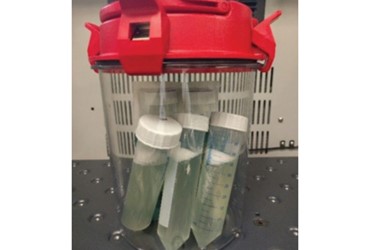Redox Potential Monitoring For Improved Anaerobic Fermentation
By Ying Yang and Ma Sha, Eppendorf, Inc.

In fermentation, redox potential is an important physiochemical factor that measures the tendency of the culture medium to acquire electrons. It can directly influence bioprocess efficiency. For example, in the anaerobic fermentation of Clostridium to produce industrial solvents, the redox potential relates to the intracellular ratio of NAD(P)+ to NAD(P)H, which in turn influences the production of solvents, including butanol.
In this study, we cultivated C. beijerinckii under anaerobic conditions in BioBLU 3f Single-Use Vessels. We monitored the redox potential of the fermentation broth online using ISM® redox sensors and observed that the redox potential varied throughout the process. When we kept it close to −500 mV by adding sodium sulfide, bacterial growth and butanol production drastically increased compared to a process without redox potential control.
The study demonstrates the suitability of the BioFlo 120 bioprocess control station and the BioBLU 3f Single-Use Vessel for anaerobic fermentation and shows the advantages of redox potential monitoring during C. beijerinckii fermentation.
Get unlimited access to:
Enter your credentials below to log in. Not yet a member of Bioprocess Online? Subscribe today.
